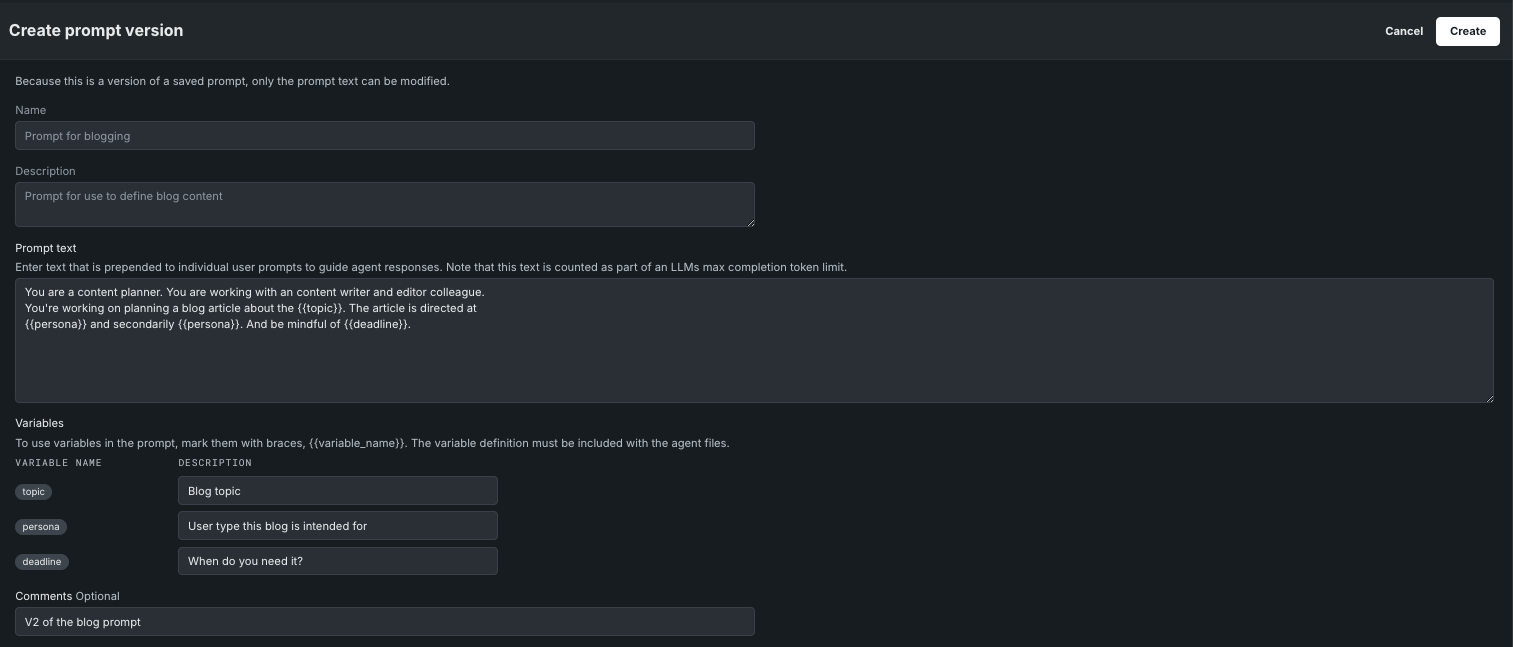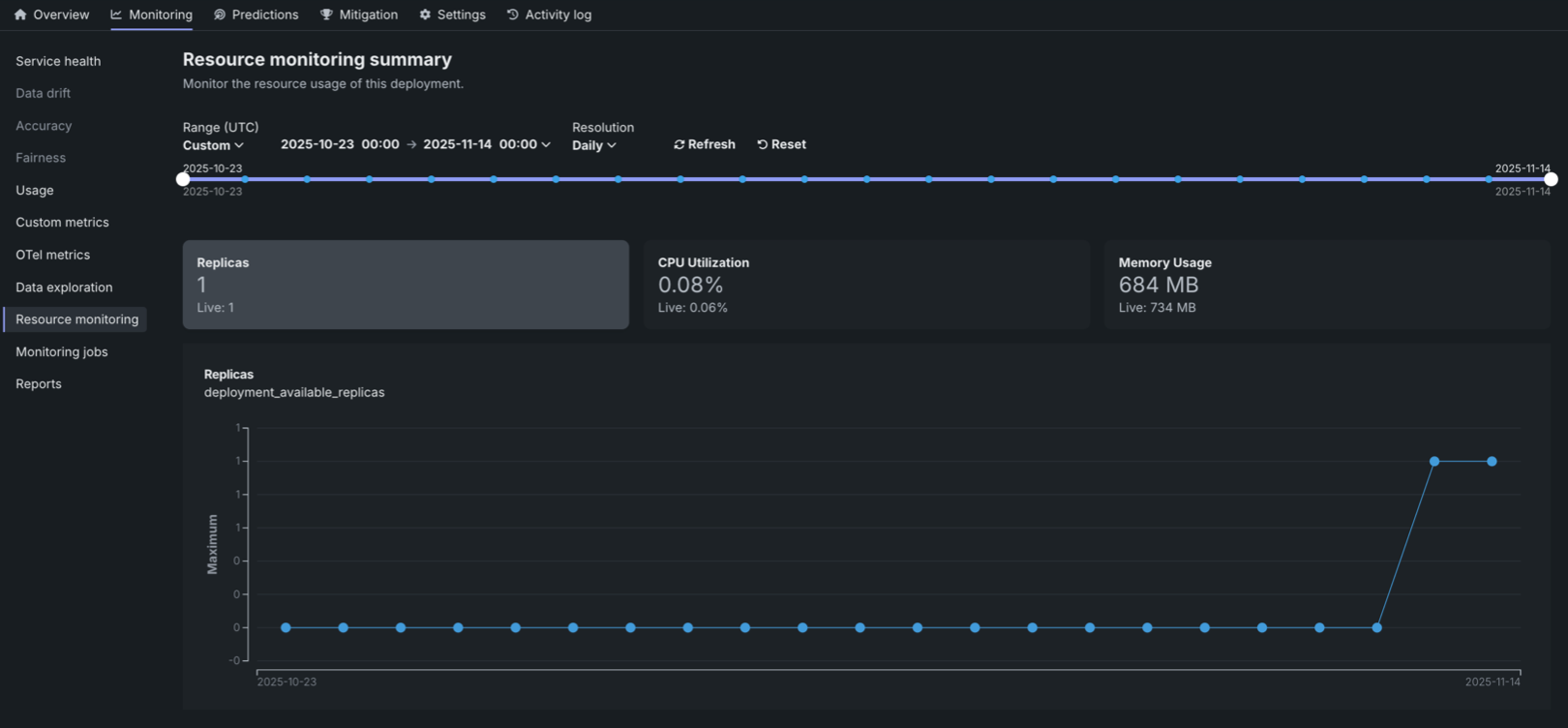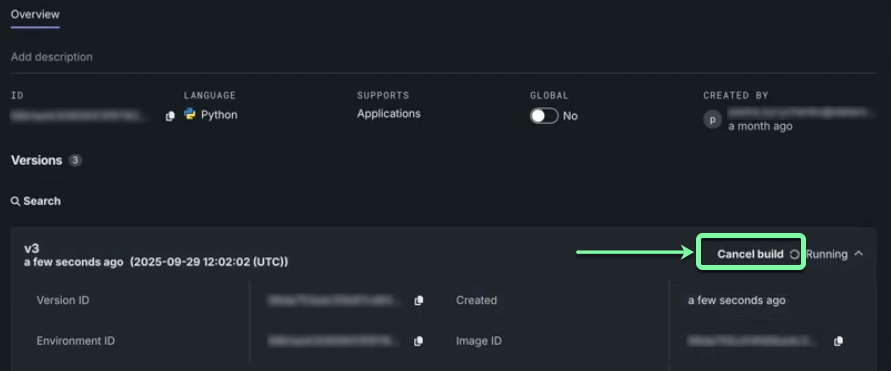Managed SaaS releases¶
November SaaS feature announcements¶
November 2025
This page provides announcements of newly released features available in DataRobot's SaaS multi-tenant AI Platform, with links to additional resources. From the release center, you can also access past announcements and Self-Managed AI Platform release notes.
Agentic AI¶
Centralized, version-controlled prompt management system introduced¶
The new prompt management system, available from the Prompts tile within Registry, provides a centralized, version-controlled, and integrated system for prototyping, experimenting, deploying, and monitoring prompts as agent components. Effective prompt management is critical for developing production-grade AI agents and is critical to incorporate from ideation to production.
Prompt versioning is vital for managing changes to prompts over time, as even small alterations can significantly impact an LLM's output. This practice ensures reproducibility, allowing teams to link specific model outputs to the exact prompt version that generated them, and facilitates quick rollbacks to stable versions if new changes degrade performance.
Prompt governance establishes a controlled process for the creation, testing, approval, and deployment of prompts. A centralized prompt registry serves as a single source of truth, enabling quality assurance through integrated approval workflows that vet prompts for quality, bias, and adherence to company guidelines before deployment.
Add runtime dependencies (Fast iteration)¶
For rapid development and testing with the DataRobot Agent Templates repository, add dependencies at runtime without rebuilding the Docker image. Dependencies added to the extras group in your pyproject.toml file are installed when the prompt is first executed in the playground or when the deployment starts. Runtime dependencies are ideal for:
- Quick iteration during development
- Testing new packages without rebuilding images
- Adding lightweight dependencies that don't require compilation
Use the task agent:add-dependency command to add a runtime dependency to your agent:
task agent:add-dependency -- "chromadb>=1.1.1"
For more information, see the runtime dependencies documentation.
New LLMs introduced¶
With this release, DataRobot makes Claude Opus 4.1 and Claude Sonnet 4.5 available to users, either through the LLM gateway or as an external integration. These LLMs are available from GCP, AWS Bedrock, first-party Anthropic. See the availability page for a full list of supported LLMs.
Data¶
Support for Jira and Confluence added to DataRobot¶
Support for the Jira and Confluence connectors has been added to DataRobot. To connect to either Jira or Confluence, go to User settings > Data connections or create a new vector database. To configure the connection, you can use a username and API token (Basic) as the authentication method. Note that these connectors only support unstructured data, meaning you can only use it as a data source for vector databases.
Improvements to connection browsing experience¶
When working with data connections, you can now modify the configuration as well as manage associated data sources and credentials from the same page. To do so, open a modal that allows you to add data, or go to User settings > Data connections. Select the connection you want to modify, and edit the connection using the Connection Configuration, Data Sources, and Credentials tabs. Then, click Save. This release also introduces several minor improvements user interface for data connections.
Predictions and MLOps¶
Resource monitoring for deployments¶
The Resource monitoring tab provides visibility into resource utilization metrics for deployed custom models and agentic workflows, helping you monitor performance, identify bottlenecks, and understand auto-scaling behavior. Use this tab to evaluate resource usage, navigate tradeoffs between speed and cost, and ensure your deployments efficiently utilize available hardware resources.
To access Resource monitoring, select a deployment from the Deployments inventory and then click Monitoring > Resource monitoring. The tab displays summary tiles showing aggregated and current values for key metrics, along with interactive charts that visualize resource utilization over time.
Platform¶
Option to cancel a running environment build¶
This release provides a method for users to cancel running environment builds to help with cases where the build is hung or failed. To do so, simply click Cancel build on the Environment Overview page.
After cancellation, system administrators can replace the content and retry the build.
Code first¶
Python client v3.10¶
Python client v3.10 is now generally available. For a complete list of changes introduced in v3.10, see the Python client changelog.
DataRobot REST API v2.39¶
DataRobot's v2.39 for the REST API is now generally available. For a complete list of changes introduced in v2.39, see the REST API changelog.
All product and company names are trademarks™ or registered® trademarks of their respective holders. Use of them does not imply any affiliation with or endorsement by them.



